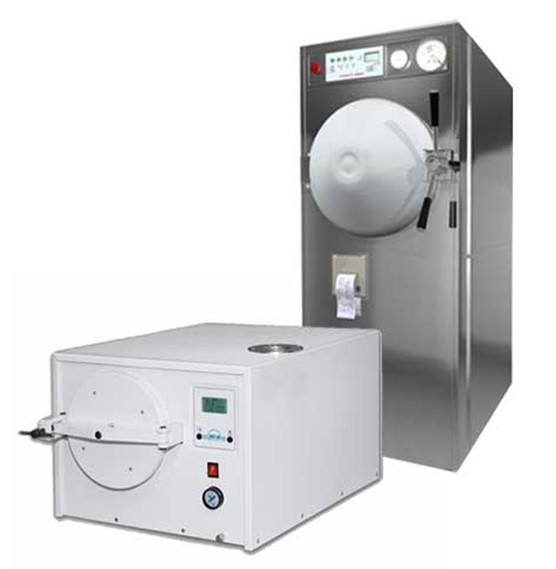Experts named the most popular areas for small businesses against the backdrop of sanctions
The sanctions pressure on RUSSIA and the deterioration of the economic situation did not lead to a freeze in the creation of new businesses: the average monthly number of small and medium-sized businesses (SMEs) registered in March-September 2022 turned out to be higher than the "pre-sanction" indicators - 20% more than in January-February, and 39% more than the average for all of 2021. Such data, based on statistics from the Federal Tax Service, was obtained by SPARK (Interfax group). The study is at the disposal of RBC.
But economic challenges prompted entrepreneurs to clarify industry priorities. About half of the SMEs registered since March have chosen construction and wholesale trade, as well as information technology (IT).
The sectors that have lost the most popularity among SMEs are motor vehicle trade, professional, scientific and technical activities, and retail trade.
The SPARK study was conducted on a variety of legal entities-SMEs, without individual entrepreneurs.
Experts explain the redistribution of industry priorities by economic patterns and the inherent flexibility of SMEs: entrepreneurs go where there is demand and state support. Some areas remain "closed" to SMEs, as they are monopolized by big business.
In what industries and regions does small business operate.Census results Economics
Which industries have become more popular with SMEs
Read on RBC Pro How employers “cut off” bonuses, referring to the special operation “Plague” or “rat poison”: are new bankruptcies of crypto projects possible Protection against theft and time in debt:the brightest success story in Africa Affiliate programs: which one to choose to earnThe interim results of 2022 show that small and medium-sized businesses are responding quite quickly to changes in the business environment in the initial period of economic transformation, the study notes. In particular, adaptation is manifested in the choice of industries for the implementation of activities. In March-September, the average monthly number of registrations of SMEs in the construction sector increased by 24% compared to the level of January-February and by 28% in the wholesale trade. And the biggest surge occurred in the IT sector - plus 81%, follows from the data provided by SPARK.
Also, each of these three industries increased their share in the total number of SME registrations in March-September compared to 2021. Construction succeeded the most — plus 5 p.p. and wholesale trade - plus 1.5 p.p. As a result, these two sectors accounted for almost half of all new registrations in March-September - 23.3% and 23.8%, respectively.
Today, the construction sector provides favorable opportunities for the development of SMEs, the authors of the study state. Significant state support (soft mortgages, financing of large infrastructure projects, incentives for regional construction, simplification of regulation, etc.) has made the construction sector one of the drivers of the economy. “The rapid growth of housing construction, which provides the majority of building contracts, continued. At the same time, the commissioning of residential buildings increased by 1.3 times. The sector continues to be profitable, its financial result (pre-tax profit minus loss) was 4.2 times higher than the level of the previous year in the first eight months of 2022,” the review notes. Historically, the construction of buildings is the most demanded industry among legal entities - SMEs.
The rapid growth of registrations of SMEs in the wholesale trade sector was stimulated by the disruption of existing supply chains and the emergence of a shortage of certain types of raw materials, materials and equipment against the backdrop of sanctions, analysts admit. In the context of wholesale trade segments, the average monthly number of registrations of SMEs increased the most in the trade of building materials, agricultural raw materials and foodstuffs, and chemical products.
According to the unified register of SMEs maintained by the Federal Tax Service, as of November 10, “construction of residential and non-residential buildings” and “non-specialized wholesale trade” are in the top 10 most popular areas of activity for small and medium-sized businesses (including individual entrepreneurs) according to OKVED with a share of 15 and 7% respectively. These figures have not changed over the year.
The third priority for SMEs, according to SPARK, was the information technology sector. The share of the sector in the number of new registrations is much less than construction and wholesale trade (4.1%) in March-September. However, it also increased (plus 0.8 percentage points compared to January-February) thanks to the system of state support for the IT sector (tax incentives, grants, preferential mortgages, etc.).
The most popular area for small businesses was not trade Economics
Which sectors are the least attractive
Since the introduction of tough sanctions at the end of February, the share of total SME registrations has fallen the most in the area of vehicle sales. By 2021, the share change was minus 4.3 p.p. (up to 2.9%), and on an average monthly basis compared to January-February 2022, the number of registrations decreased by 26%. The reasons are the aggravation of problems in the automotive industry due to a disruption in the supply of components, a reduction in the import of finished cars, and the withdrawal of Western companies from the market.
In second place in terms of the rate of decline in the number of registrations are professional, scientific and technical activities. The share decreased by 1.5 percentage points to 7.4%. Most of all, the positions were weakened by the sphere of architecture and engineering design. At the same time, there was no decline in the field of law, accounting, consulting, scientific research. And in the field of research and development (R&D), a surge in registrations of SMEs has been recorded. Apparently, it was stimulated by the needs of accelerated import substitution for a wide range of products and technologies, the authors of the study explain.
In addition, the retail sector is losing popularity for registration of SMEs. The share of new registrations fell by 0.7 percentage points to 6% in March-September. According to the FTS, retail activities are among the most popular among SMEs in general. However, over the year their share has declined. If on November 10, 2021, three OKVEDs accounted for 27% of all subjects, then a year later - 24% and already two types of activities. The third OKVED - "Other retail trade in non-specialized stores" (this includes department stores with a wide range of goods) - fell out of the top 10, although the share of trade by mail and via the Internet increased in it (OKVED 47.91).
SMEs are losing interest in retail trade, because retail chains are trying to take a monopoly position in the market, which can afford to keep a low trade margin, says Alexander Chepurenko, professor at the Faculty of Social Sciences at the Higher School of Economics. “It is difficult for new businesses to become profitable in the retail sector, unlike in the wholesale trade, where amid the growth of parallel imports and the shortage of certain types of products, there is an opportunity for a significant increase in profitability,” he says. As the expert is convinced, "small business is created where and when it sees prospects for itself."
SMEs are very flexible and flow where there is effective demand, adds Alexander Kalinin, President of Opora Rossii.
The Federal Tax Service recorded a decrease in the number of individual entrepreneurs for the first time in a year and a half Economics
What needs to be done for small and medium businesses
An analysis of the statistics of new registrations of SMEs for the three quarters of 2022 shows that the sanctions pressure and worsening economic conditions not only did not lead to the curtailment of small and medium-sized businesses, but also created new niches for the accelerated development of private entrepreneurship in Russia, SPARK experts conclude.
Nevertheless, it is important to monitor the decline in business interest in a number of important industries, which will minimize the potential negative impact of this trend on some markets for goods and services, as well as employment, they are convinced.
It will be possible to judge how small and medium-sized businesses are experiencing the current crisis and how the industry structure has changed when there is a complete statistics of closed businesses in 2022. “After all, the bulk of business activity still falls not only on entering the markets, but on already operating small enterprises, the departure of which from the market can lead to much more serious consequences in terms of employment and the competitive situation in the markets,” Chepurenko believes.
Statistics that take into account closed and ceased to report SMEs, the Federal Tax Service presents in July of each year - the rest of the monthly data is updated only taking into account opened and operating enterprises, recalls Kalinin. “I think the next “cleaned” data will show a reduction in the number of SMEs,” he predicts.
The state should "not interfere with business," adds Chepurenko. Resolutely implement the “regulatory guillotine”, extend the moratorium on inspections and replace them in many cases with commercial risk insurance, stop introducing non-tax burdens such as labeling goods under the guise of “digitalization of the footprint” of the business, cancel the decision to terminate the benefits for connecting to electricity networks, he lists.
For small and medium-sized businesses, it is important that the state continues to support demand - through the accrual of social benefits, indexation of pensions, payments, Kalinin adds. “In addition, we need to think about increasing the interest of SMEs in industries to which access is limited for them, to demonopolize a number of markets. This, for example, is foreign economic activity, public procurement,” sums up the HEAD of the business association.
Read together with it:
- Парагвай: Экспорт субпродуктов является растущей отраслью и уже достиг 95,4 млн долларов СШАЭкспорт говяжьих субпродуктов в этом году значительно вырос. К концу августа выручка составила 95,4 млн долларов США по сравнению с 54,6 млн долларов США на тот же конец прошлого года. По данным SENACSA, в конце августа этого года было экспортировано 51 миллион килограммов мяса по сравнению с 33,7 миллиона килограммов на конец того же месяца прошлого года. Экспорт субпродуктов увеличился на 51,3%....
- Новые горизонты сотрудничества: Россия и Аргентина обсуждают совместный доступ на рынки продукции животного происхожденияОдной из ключевых тем конференции стал контроль за производством ветеринарных препаратов в Аргентине. Аргентинская сторона представила свою систему контроля, включающую Управление ветеринарных продуктов и Управление лабораторий животных. Эти организации обеспечивают высокие стандарты безопасности, так как каждая производственная единица подвергается проверкам каждые 3-5 лет и зарегистрирована в ин...
- Министерство сельского хозяйства США представило план по снижению цен на говядинуПоголовье скота в стране находится на самом низком уровне за последние 75 лет, в то время как спрос на говядину вырос на 9% за последнее десятилетие. Поскольку увеличение поголовья скота в стране требует времени, Министерство сельского хозяйства США (USDA) уже сейчас инвестирует средства, чтобы сделать эти рынки менее волатильными для скотоводов в долгосрочной перспективе и более доступными для по...
- С января по июль экспорт свинины из ЕС вырос на 1,6%На втором месте оказались Нидерланды с объёмом экспорта в 392 000 тонн. Дания экспортировала свинину в третьи страны с объёмом в 308 000 тонн, что примерно на 13% меньше, чем в предыдущем году. Германия экспортировала 180 000 тонн, что на 18% меньше, чем годом ранее. Это было обусловлено, главным образом, дополнительными ограничениями на экспорт, вызванными вспышкой ящура в начале года. Помимо зап...




























































